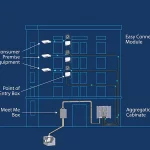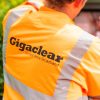Mobile Network Operator EE UK Sees Surge in IPv6 Deployment
The latest batch of IPv6 network operator measurements has revealed that take-up of the “new” internet protocol (IP) addressing standard has sky-rocketed on EE (AS12576) since September 2018, going from a deployment percentage of 10% to 28.05% over several short weeks.
At present many mobile operators and fixed line broadband ISPs still make use of the old IPv4 standard and often adopt a form of CGNAT (IP address sharing) in order to make those addresses last longer, which is partly because new IPv4s are no longer being distributed by the registry (they’ve run out). Without an IP address you wouldn’t be able to identify your connection online or use other internet services.
However EE and parent BT have both been busy deploying the replacement standard – IPv6 – at scale alongside their existing IPv4 network(s) since around 2016 (details). As a result it’s now estimated that IPv6 deployment has reached 45.64% of BT’s network and in the past month EE has also shot up to 28.05% (partly due to Apple’s iOS 12 update adding IPv6 to cellular data).
Advertisement

The change is noteworthy because EE is both the largest mobile network operator in the United Kingdom (29.6 million customers) and they’re also the largest operator of 4G (Mobile Broadband) services in Europe. As a result of this change EE is now ranked 55th in the world for IPv6 deployment progress, which compares with BT at 21st.
Massimiliano Stucchi, IPv6 Manager at RIPE NCC, told ISPreview.co.uk:
“It’s encouraging to see progress being made in IPv6 adoption, especially in the UK market. Hopefully this will create some momentum and set the trend for other operators to follow suit. With nearly 25% of Google and Facebook users accessing these services over IPv6, there’s solid proof that IPv6 is here and its ready.
IPv4 address trading and Carrier Grade NAT might be valuable short-term strategies, but they cannot scale indefinitely. Organisations like major ISPs are well placed to help businesses to prepare for the future – IPv6 is the only way to safeguard the future growth of the Internet.”
Of course if we’re talking about IPv6 adoption among the major UK network operators then few can beat Sky (Sky Broadband) on 87.74% (8th position). Many others are still playing a slow game of catch-up (Virgin Media) or have yet to even start (TalkTalk, Vodafone etc.).
UPDATE 9:33am
Advertisement
Added a comment from RIPE NCC above.
Mark is a professional technology writer, IT consultant and computer engineer from Dorset (England), he also founded ISPreview in 1999 and enjoys analysing the latest telecoms and broadband developments. Find me on X (Twitter), Mastodon, Facebook, BlueSky, Threads.net and Linkedin.
« Devon and Somerset UK MPs Call for Action After Broadband Delay
















































Comments are closed